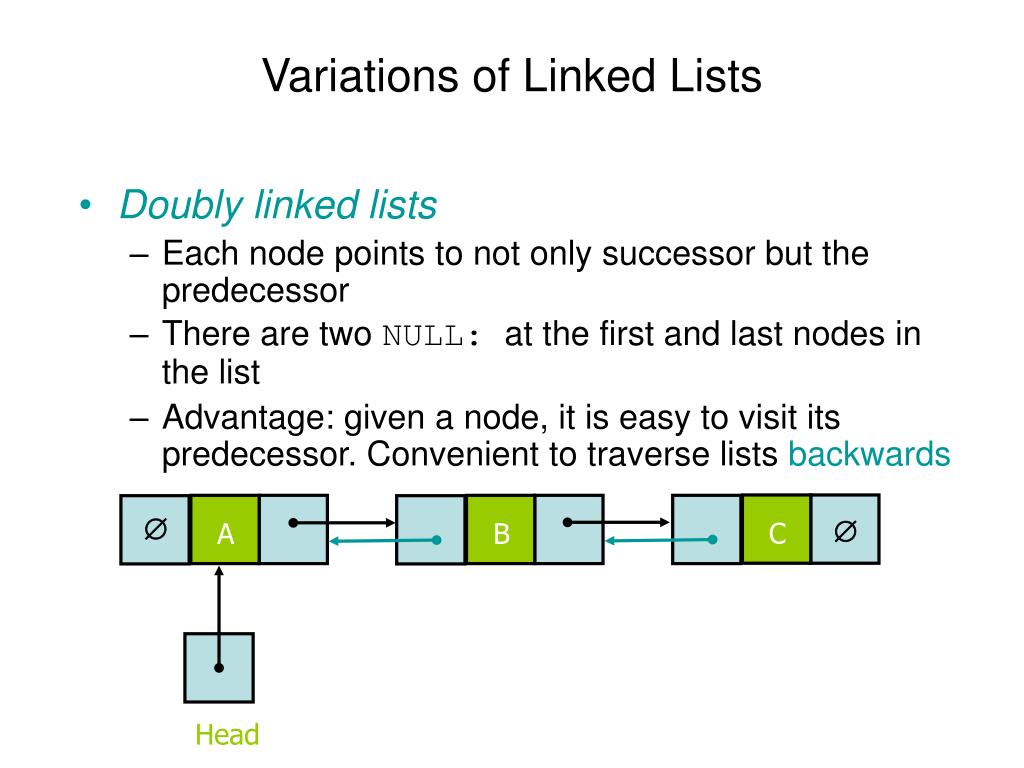
Circular linked list Linked list where last link points back to the first link Evaluation of linked list Bad because takes up more memory since it has to have pointer and node. Header node points to both first and last node of the list.Īdditional space is used though. Double linked list Nodes contain data, pointer to its successor, and pointer to its predecessor. When deleting last node, change the pointer of the previous node to null. Garbage collector will clean up unused node. Deleting an element from a linked list Just change the pointer in the previous node to the one in the next node. Adding an element to a linked list Find the node you want to insert it after, create new node, change pointer of node that is before new node to new node, change pointer of new node to node after the first node's pointer you changed. When sketching linked lists Each node should have data and a pointer, linked list should start with a header node. last pointer pointer value is null Accessing an element of a linked list Done by following the pointers of all the previous nodes Characteristics of the beginning/end of a linked list Header node in the beginning only containing a pointer to the first element of the LL.

LL in memory does not have to be continuous in the memory, can be Node Contains both data and a pointer Pointer Field of the node whose value points to another object stored in some other memory location.
Linked list stack head series#
Linked List ADT, sequential and dynamic, constructed from a series of nodes that each have data and a pointer to the next node of the list.

Front end fixed queue Only things at position 0 will be removed, everything has to move up to that position as position 0 is deleted. More efficient, won't crawl in memory, but careful tracking of the two pointers is necessary, hard to implement, increased chances for errors, hard to code. Pointers are being moved to determine the front and back, no set positions. Tail pointer moves as things are added to the back as well. The head/front pointer moves as things are deleted from the front, and therefore will not cause data crawling(in front end fixed the data would all shift up one, or in crawling queue data would crawl). List.size() - for both Circular queue Queue where last position is connected back to first position. queue() - where dequeue is list.remove(0) List.enqueue(5) -where enqueue is addTail(item) List.push(5) - where push is addHead(item)
Linked list stack head code#
Code snippets Adding elements to the head of a stack/queue:

Queue is empty When head and tail pointer point to same node Tail pointer Points to a spot where enqueueing is possible Head pointer Points to first node Static arrays Have a specific maximum length that cannot be altered at run time. Removing elements from the front of a queue deleting or dequeuing Front and end of queue Head and tail Main methods of a queue enqueue() adds an element to the queue as a last element, added according to a tail pointer variable for indexĭequeue() removes first element, done using head pointer variable for index, pointer is moved down one.


 0 kommentar(er)
0 kommentar(er)
